Nivedita Yohana
Wijsheidsweb, 2018-12
part 1 — part 2 — part 3
Exploration in the selected cultures of the world
Sans stories the human race would have perished as it would have perished sans water.
Isak Dinesen, (from Tooze, 1959, p. 3)
At certain point in the history of mankind, there were no computers, no books, infact no written word. There was only speech. As such, the spoken world reigned supreme. Oral communication was the means of communication (Sawyer, 1962; Tooze, 1959). People used only their speech to tell stories.
In a non-print world, it was the way in which people entertained themselves and engaged in play. It was how people expressed themselves and communicated with each other. It was the way in which people learned not only about their culture, their history, and their surrounding physical world but also about the neighboring cultures and histories thus paved way for expansion of humankind.
It was the means by which the old taught the young and handed down values from one generation to the next. Imagination and creativity marked by intelligence is what sets us apart from the primates. The ability to fantasize and create events that has not been seen or heard and repeat those that are seen or heard have taken us far beyond the planet.
The important years in a person’s life is the early impressionable formative years unbridled by any care or concerns of the adult world. The most important objective in developmental psychology involves studying the processes by which young people come to think, behave and function effectively within experiential and cultural worlds which they are familiar with as well those cultures which they are unfamiliar with.
An important step in this task is trying to understand the diverse possible worlds into which people are born and how individuals, with particular “endowments,” “inheritances” or “constraints” (both biological and social or cultural) come to function or live successfully within these worlds.
As we know different cultures afford different symbolic resources useful in “structuring” and “organizing” experience for individuals and that one important way in which these various worlds or cultures are shared in a community is through storytelling. Further, examining the narrative practices in different cultural communities, and how young people come to participate in these practices, is one way to describe the different forms of “cultural tools” or “resources” children come into contact with and subsequently use to understand and make sense of their personal experiences when they are introduced to the outside world — family, other children in the school, teachers and strangers.
The young ones in the animal kingdom need to learn to defend themselves, to hunt, to fly, to predict danger, to know when to retreat, when to fight and master all the laws of the jungle in order to survive. As Hobbes grimly describes the state of mankind as “nasty, brutish, and short” in Leviathan, struggle to survive starts from the day a child is born. Following the same principles, it is imperative for an adult to prepare the child to skillfully navigate the world to decipher people with good intention and those with bad.
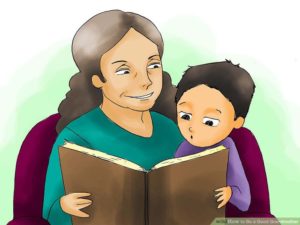
The most effective ways to communicate with a child is through stories sometimes with fantastical beings or animals who speak or mythical creatures.
In some cultures (mostly the non- hierarchical ones) this is seen as training the child or in some other cultures (mostly the hierarchical ones), seen as the “wisdom” or the knowledge imparted to child.
There are innumerable stories for children across the globe hence stories that best represent a culture has been selected for the clarity and conciseness of this article.
Tradition of storytelling in the Middle East
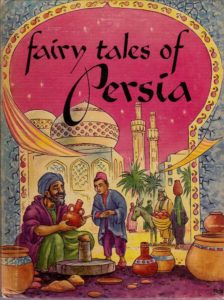 The writings of Ubayd Zakani (ca. 1300–1371), a Persian poet and satirist from Qazvin, use a provocative and frank tone that have been enjoyed for centuries.
The writings of Ubayd Zakani (ca. 1300–1371), a Persian poet and satirist from Qazvin, use a provocative and frank tone that have been enjoyed for centuries.
In the twentieth century some of his works, such as Mush va Gurbah (Mouse and Cat) and Risalah-yi Dilgusha (Joyous Treatise), have been adapted as highly illustrated children’s books, which contains moral lessons for children and young adults.
In Afghanistan today, a number of artists and storytellers have been producing a wide range of children’s books and film animation for young people. From Idris Shah, whose works have been translated into English in the United States, to more recent writers such as Parvin Pizhvak, who has written several short stories and booklets in Persian for children such as Mājarāʹhā-yi ārash (The Adventures of Arash).
Starting in the 1960s, with official support from the government and backing of the Empress Farah Pahlavi, the Institute for the Intellectual Development of Children and Youth began an active program of producing high-quality children’s books, music, and animated films in Iran. Many notable, award-winning artists, illustrators, and authors over the decades have contributed to this effort.
Today, in the Islamic Republic of Iran the work of the Institute continues to flourish, and a number of creative books like the pop-up book on display are produced for Iranian youth.
Iranian children’s books draw upon the rich body of stories that exist in the Persian epic, the Shahnameh. The Shahnameh stories, while entertaining, are also lessons in human relations and moral behavior. The Iranian children literature contains lot of mythical beings and metaphors through which ancient wisdom is derived. Often the stories are narrated and explained by elders. Children are also read traditional poems one such example is Omar Khayyam.
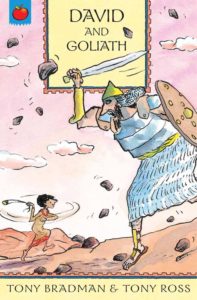 The kernel of truth at the crux of the story of David and Goliath is that even the strongest and biggest bully can be brought down by someone who is decent and clever. There is no an iota of doubt that the idea of “Survival of the fittest” applies to all the species however the implication of the word “fittest” differs from us and the animal kingdom. Brute physical strength is not necessarily a prerequisite to survive in the world of Homo sapiens as human beings are far more intelligent which has led to surpass the animal kingdom to gain control over the world. Humans seem to rely on a uniquely flexible way to control behavior through clever thinking. We can use our capacity to think about alternative situations to consider the perspectives of others, to think about possibilities and even to entertain entirely fictional scenarios.
The kernel of truth at the crux of the story of David and Goliath is that even the strongest and biggest bully can be brought down by someone who is decent and clever. There is no an iota of doubt that the idea of “Survival of the fittest” applies to all the species however the implication of the word “fittest” differs from us and the animal kingdom. Brute physical strength is not necessarily a prerequisite to survive in the world of Homo sapiens as human beings are far more intelligent which has led to surpass the animal kingdom to gain control over the world. Humans seem to rely on a uniquely flexible way to control behavior through clever thinking. We can use our capacity to think about alternative situations to consider the perspectives of others, to think about possibilities and even to entertain entirely fictional scenarios.
We can travel mentally in time, as it were, and consider how events unfolded and, importantly, what the future might hold. We can compare alternative routes to the future and deliberately select one plan over another — giving us a sense of free will and an edge over creatures with less foresight. Hence, human babies are dependent on the care of the adults far more than our counter parts residing in our dwindling forest. It is a story that exists in hundreds of different written versions from the Bible onwards, including picture book versions such as Tony Bradman’s The Greatest Adventures in the World: David and Goliath, and it can be told for any age group and any situation.
Tradition of storytelling in Asia
Tibetan Tales from the Top of the World contains three tales from Tibet, each told in English and Tibetan. In the foreword, The Dalai Lama writes,
“Because the stories are set in Tibet, readers in other lands will naturally become aware of the existence of our country and of the values we hold dear.”
The stories feature dramatic full-page paintings, as well as some spot illustrations. The three stories are “Prince Jampa’s Surprise,” “Sonan and the Stolen Cow” and “Tashi’s Gold.” The stories tell of the importance of not judging others without seeing for yourself, of truth, responsibility and kindness and folly of greediness.
Chinese Fables: “The Dragon Slayer” and Other Timeless Tales of Wisdom features 19 tales, some dating back to the third century BCE, now retold for a modern English audience. The illustrations by Lak-Khee Tay-Audouard, created with colored pencils and wash on bamboo rag paper, add interest to the stories. As the author states in the preface, “as fables and parables the world over have always done, these Chinese tales illustrate both the wisdom and foolishness of ordinary folk.”
There is a lot of humor in the fables that children and adults alike will enjoy. There are a great many silly people in the stories who learn valuable lessons through their own choices and experiences. Unlike many fables, such as Aesop’s Fables, these fables feature people rather than animals.
Japanese Children’s Favorite Stories reflects the enduring popularity of the 20 stories. These traditional tales, passed down from generation to generation, emphasize honesty, kindness, perseverance, respect and other virtues in a most entertaining manner. The lively illustrations featuring much that will be new to young English-speaking readers and listeners add to the fun. The tales feature goblins, walking statues, toothpick warriors, a magic teakettle and other amazing creatures and objects. A few of the tales may be familiar to you in somewhat different versions.
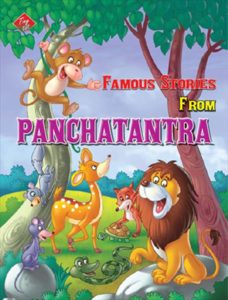
Most popular children literature in India is Panchatantra, a collection of five volumes of stories written by a teacher to help instruct the different aspects of kinghood for princes. The five volumes together serve as a manual for a prospective king, to help him in deciding how to rule, how to choose his fellow friends, fellow ministers, how to conduct himself in daily life etc. The collection of stories in Panchatantra is a real treat for parents to help guide children towards values in human life. Every story in Panchatantra is accompanied by a moral.
Hitopadesha is a collection of Sanskrit fables in prose and verse; it is similar to, though distinct from, the Panchatantra. The Hitopadesa is known to be at least several centuries old. Originally written in Sanskrit, its stories have travelled to several parts of the world.
The work has been translated into most of the major languages of the world. An English translation, rendered by Sir Edwin Arnold, then Principal of Puna College, Pune, India, was published in London in 1861.
The Jataka tales are a voluminous body of literature native to India concerning the previous births of Gautama Buddha. These are the stories that tell about the previous lives of the Buddha, in both human and animal form. The future Buddha may appear in them as a king, an outcast, a god, an elephant—but, in whatever form, he exhibits some virtue that the tale thereby inculcates.
Tradition of storytelling in the Eastern and the Western Europe
The best work that represents children’s literature in the Eastern Europe is Fairy tales of Eastern Europe by Neil Philip.
Twenty-two stories adapted from original eastern European lore comprise this flavorful collection, which strongly affirms the enchanting appeal of fairy tales.
Common themes of the genre are prevalent — kindness, cleverness and determination are rewarded; pride, greed and wickedness are (often brutally) punished — and well-known characters such as Baba Yaga and Babushka appear throughout.
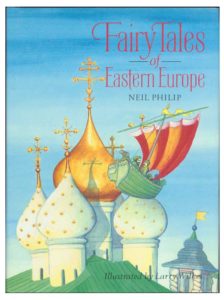
In addition to making the stories accessible, folklorist Philip takes great care to provide authentic translations that closely replicate the oral traditions and individual cultures of the various countries. Wilkes’s numerous pen-and-ink sketches and full-color paintings bring the look of old Europe to life while tenderly depicting the human frailties that are at the heart of good storytelling.
On the other hand, in the western part of Europe stories narrated to children have gone through tremendous changes due to Europe’s constant political instability- Pre-modern children’s literature, tended to be of a didactic and moralistic nature, with the purpose of conveying conduct-related, educational and religious lessons however with two World Wars fought, radical changes in ideologies and the dire need to restore stability even if it took to aligning children’s world to that of the adult’s was most called for. The modern children’s book emerged in mid-18th-century England. A growing polite middle-class and the influence of Lockean theories of childhood innocence combined to create the beginnings of childhood as a concept. A Little Pretty Pocket-Book, written and published by John Newbery, is widely considered the first modern children’s book, published in 1744. It was a landmark as the first children’s publication aimed at giving enjoyment to children containing a mixture of rhymes, picture stories and games for pleasure. Newbery believed that play was a better enticement to children’s good behavior than physical discipline and the child was to record his or her behavior daily. Child’s upbringing was more regimented.
With the advent of Industries, the underlying rediscovery of childhood and the emphatic turn towards the child reader, however, took very different forms when directed at bourgeois or middle-class children rather than at children from the lower classes, especially working-class children. While the middle classes allowed their children their own sphere of existence, which fundamentally differentiated itself from the world of adults, lower-class children were much more heavily involved in the adult world, an involvement that left them very little free time. Teachers who committed themselves to reform movements in education wrote sketches and stories about the world of the big city aimed at working-class children just beginning school. On one hand, these stories stayed close to the child’s experiential perspective and thus to the principle of starting from the child. On the other hand, they focused attention on the city, the industrial world of work, and the social problems of industrial society.
The shift to a modern genre of children’s literature occurred in the mid-19th century; didacticism of a previous age began to make way for more humorous, child-oriented books, more attuned to the child’s imagination. Literature for children developed as a separate category of literature especially in the Victorian era. Some works became internationally known, such as those of Lewis Carroll, Alice’s Adventures in Wonderland (1865) and its sequel Through the Looking-Glass. The Kailyard school of Scottish writers, notably J. M. Barrie, creator of Peter Pan (1904), presented an idealized version of society and brought fantasy and folklore back into fashion. The period from 1890 until World War I is considered the Golden Age of Children’s Literature in Scandinavia. Erik Werenskiold, Theodor Kittelsen, and Dikken Zwilgmeyer were especially popular, writing folk and fairy tales as well as realistic fiction.
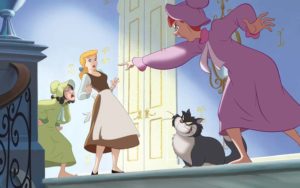
The Golden Age of Children’s Literature ended with World War I in Great Britain and Europe, and the period before World War II was much slower in children’s publishing. In the years after the First World War, writers such as Arthur Ransome (1884–1967) developed the adventure genre by setting the adventure in Britain rather than distant countries. Based on the long history of colonization, erupted stories as Cinderella, or The Little Glass Slipper, is a folk tale embodying a myth-element of unjust oppression and triumphant reward.
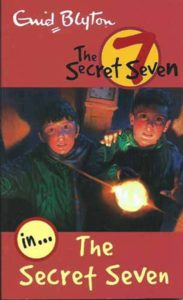
Thus, two major wars fought in Europe had a massive impact on the kind of education received by children. They often heard real life of stories from people who had travelled to faraway lands, stories of colonies or of the war. Continuing this trend, the children literature in the Western Europe was more focused on the adventures and humor than the didactic themes. There were number of detective stories as Enid Blyton’s The Secret Seven.
Continuing with a similar trend in the southern part of Europe where parents and elders of the family gathered around either for dinner or in the farms picking fruits to narrate stories of their past without any deduction or being didactic. Most of the stories narrated to children by their parents did not involve fantastical beings or supernatural elements on the contrary; the stories were downright real thus exposing children to adult life very early on.
However, with the advent of nuclear family where parents have 9-5 jobs to pay for the child’s crèche, school, college, loans and mortgages, importance for narrating stories is fading and relies heavily on the schools to take care of that.
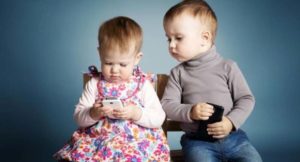
Often children are left on their own internet, play station, Xbox are replacing traditional forms of entertainment. The below picture says volumes of the current trend. Introducing gadgets may not be inherently ‘bad’ however the once warm and engaging dynamics between children and adults are certainly changing into more practical and obligated to ‘keep up’ with the needs enforced upon us by the fast-paced, competitive and impatient world.
- Birch, C. L., & Heckler, M. A. (1996). Who says?: Essays on pivotal issues in contemporary storytelling. Little Rock (Ark.): August House.
- Bruner, J. S. (1969). On knowing: Essays for the left hand. Cambridge Massachusetts.
- Hedges, N. S. (1998). The fable and the fabulous: The use of traditional forms in children’s literature. Ann Arbor, MI: University Microfilms.
- Mendlesohn, F. (2013). Diana Wynne Jones The Fantastic Tradition and Childrens Literature. London: Taylor and Francis.
- Norton, D. E., & Norton, S. E. (2011). Through the eyes of a child: An introduction to childrens literature. Boston: Pearson.
- Pelensky, O. A. (1993). Isak Dinesen: Critical views. Athens: Ohio University Press.
Notes
[1] Source: Be-a-Good-Grandmother
[2] Source: Famous stories from Panchatantra
[3] Source: Fairy tales of Eastern Europe
[4] Source: ways-you-are-responsible-for-your-childs-mobile-phone-or-smartphone-addiction










